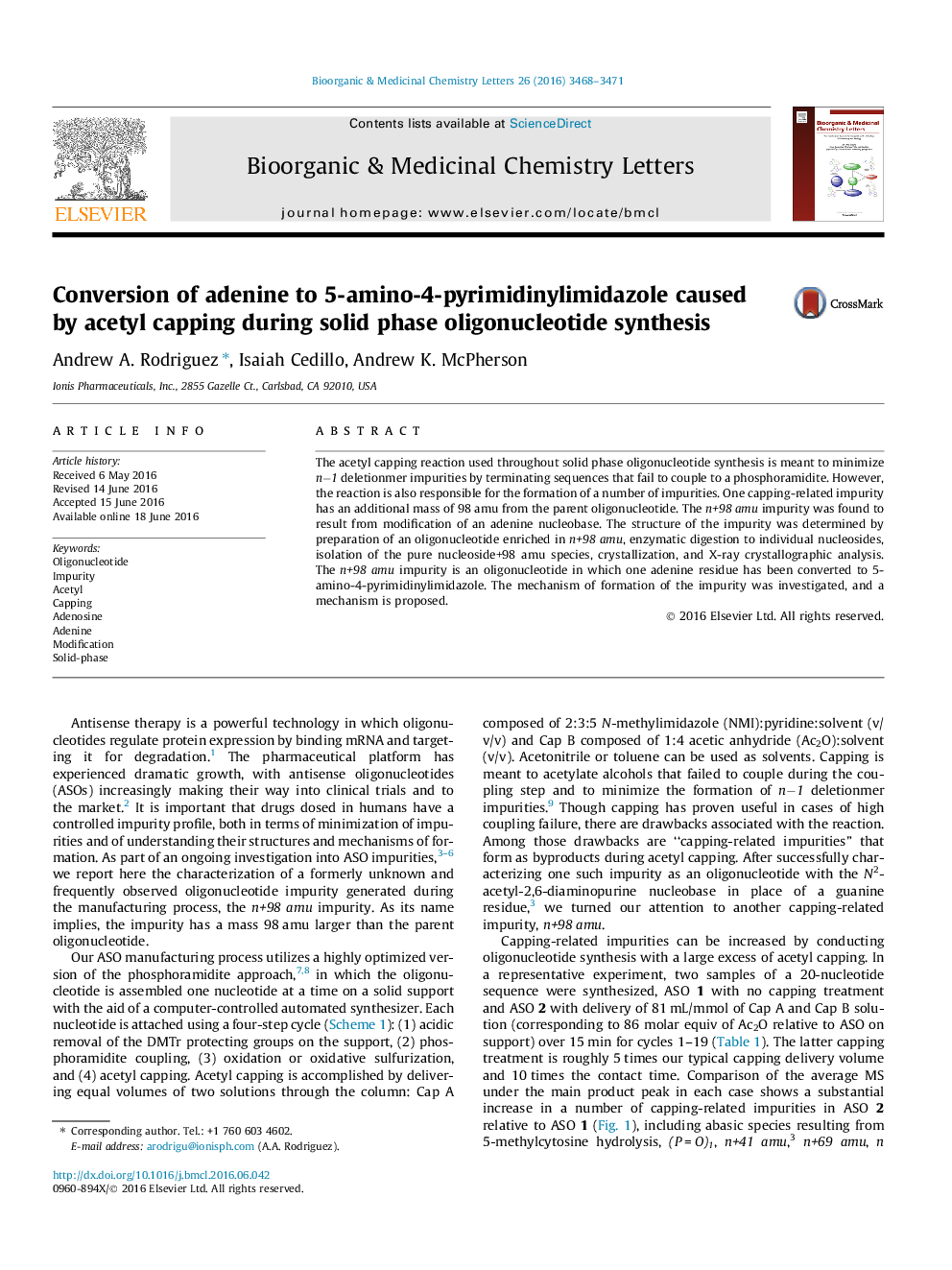| Article ID | Journal | Published Year | Pages | File Type |
|---|---|---|---|---|
| 1368496 | Bioorganic & Medicinal Chemistry Letters | 2016 | 4 Pages |
The acetyl capping reaction used throughout solid phase oligonucleotide synthesis is meant to minimize n−1 deletionmer impurities by terminating sequences that fail to couple to a phosphoramidite. However, the reaction is also responsible for the formation of a number of impurities. One capping-related impurity has an additional mass of 98 amu from the parent oligonucleotide. The n+98 amu impurity was found to result from modification of an adenine nucleobase. The structure of the impurity was determined by preparation of an oligonucleotide enriched in n+98 amu, enzymatic digestion to individual nucleosides, isolation of the pure nucleoside+98 amu species, crystallization, and X-ray crystallographic analysis. The n+98 amu impurity is an oligonucleotide in which one adenine residue has been converted to 5-amino-4-pyrimidinylimidazole. The mechanism of formation of the impurity was investigated, and a mechanism is proposed.
Graphical abstractFigure optionsDownload full-size imageDownload as PowerPoint slide
